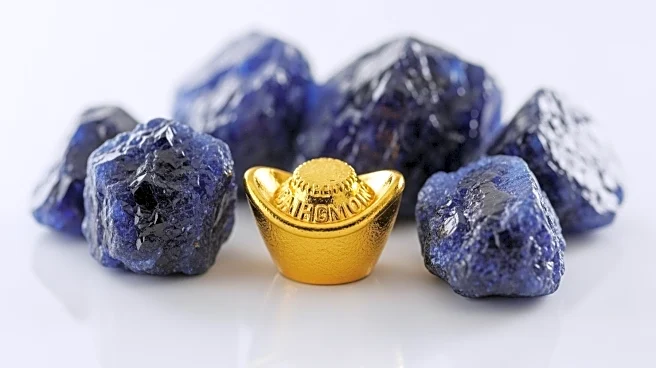What's Happening?
The U.S. Department of the Interior has proposed classifying silver as a critical mineral due to its significant role in solar technology, advanced electronics, and defense applications. This classification would elevate silver mines to critical status, allowing for faster permitting processes and potential federal assistance. While gold has not yet received this classification, there are arguments for its inclusion, particularly given its production in regions like Nevada's Carlin Trend and Idaho's Coeur d'Alene, which also yield germanium, gallium, and antimony—elements vital for electronics and aerospace applications.
Why It's Important?
The classification of silver as a critical mineral could have substantial implications for U.S. industries, particularly in technology and defense sectors. By facilitating faster permitting and potential federal support, the U.S. could reduce its reliance on foreign sources for these essential materials, thereby strengthening national security and technological infrastructure. Companies involved in silver mining may see increased investment and development opportunities, potentially reshaping the mining sector and enhancing the U.S.'s position in global mineral supply chains.
What's Next?
If silver is officially designated as a critical mineral, mining operations could experience accelerated development, with increased federal support and investment. This could lead to a reevaluation of other minerals, such as gold, for similar classification, potentially expanding the scope of critical mineral extraction in the U.S. Stakeholders, including mining companies and policymakers, will likely engage in discussions to explore the broader implications and opportunities presented by this classification.
Beyond the Headlines
The proposal to classify silver as a critical mineral highlights the evolving understanding of mineral resources and their strategic importance. It underscores the need for a diversified and secure supply chain for materials essential to modern technology and defense. This shift may prompt a reevaluation of mining practices and policies, encouraging more sustainable and efficient extraction methods to meet growing demand.










